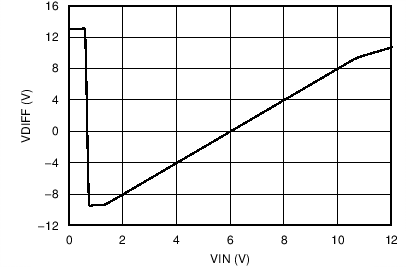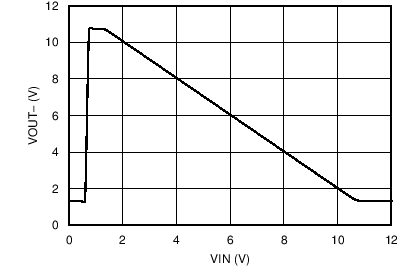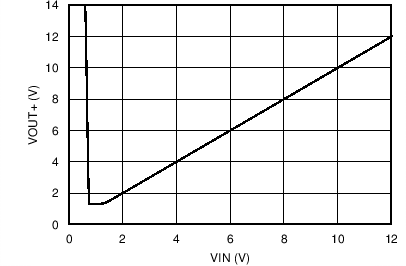SLOS412E April 2003 – November 2024 RC4580
PRODUCTION DATA
- 1
- 1 Features
- 2 Applications
- 3 Description
- 4 Pin Configuration and Functions
- 5 Specifications
- 6 Detailed Description
- 7 Application and Implementation
- 8 Device and Documentation Support
- 9 Revision History
- 10Mechanical, Packaging, and Orderable Information
Package Options
Refer to the PDF data sheet for device specific package drawings
Mechanical Data (Package|Pins)
- D|8
- P|8
- DDF|8
- DGK|8
- PW|8
Thermal pad, mechanical data (Package|Pins)
Orderable Information
7.1.3 Application Curves
The measured transfer functions in Figure 7-2, Figure 7-3, and Figure 7-4 were generated by sweeping the input voltage from 0V to 12V. However, this design should only be used between 2V and 10V for optimum linearity.
 Figure 7-2 Differential Output Voltage vs Input Voltage
Figure 7-2 Differential Output Voltage vs Input Voltage Figure 7-4 Positive Output Voltage vs Input Voltage
Figure 7-4 Positive Output Voltage vs Input Voltage Figure 7-3 Positive Output Voltage vs Input Voltage
Figure 7-3 Positive Output Voltage vs Input Voltage